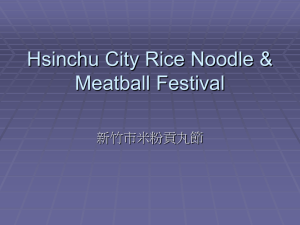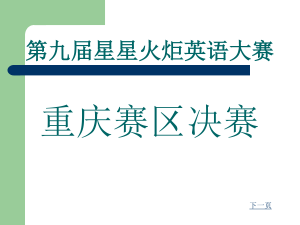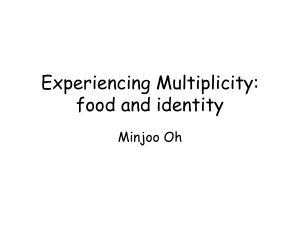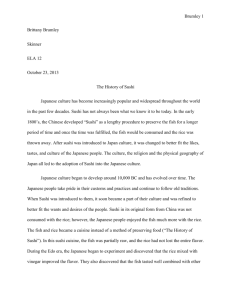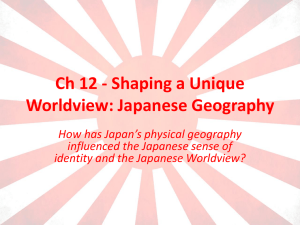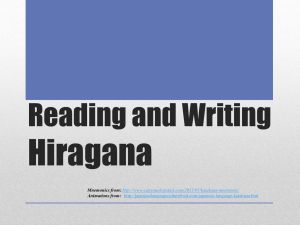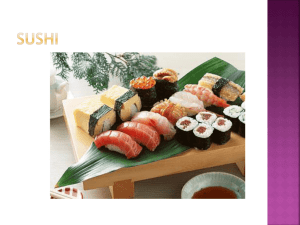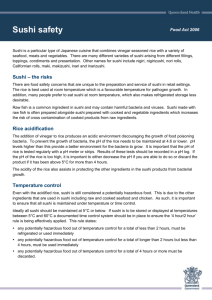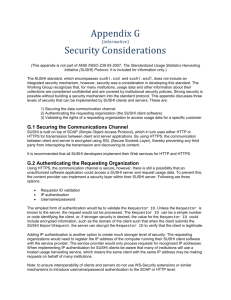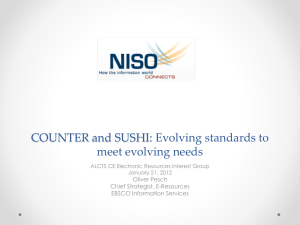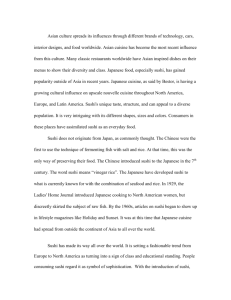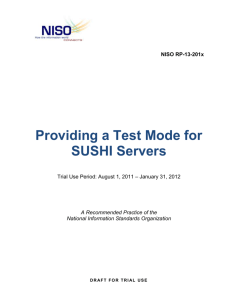日本 文化やしうかん 面白いですね!
advertisement
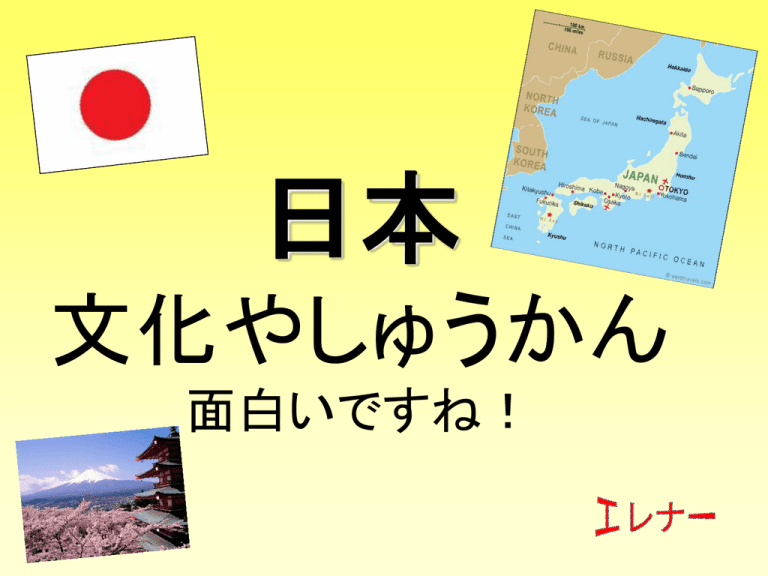
日本 文化やしゅうかん 面白いですね! 日本語 Japanese is spoken by over 130 million people in Japan and in Japanese emigrant communities such as parts of Brazil, Hawaii, USA and Australia. It is the ninth most widely spoken language in the world. When Japan occupied Korea, Taiwan, parts of the Chinese mainland, the Philippines, and various Pacific islands before and during World War II, locals in those countries were forced to learn Japanese in empire-building programs. As a result, there are many people in these countries who can speak Japanese in addition to the local languages. The top 10 most widely spoken languages across the world are: English, Chinese, Spanish, Arabic, Bengali, Hindi, Russian, Portuguese, Japanese and German. 祭り 日本で祭りがたくさんです。いろいろあります。 楽しいと思います。 The Sapporo Snow Festival ( さっぽろ雪まつり) is held during one week every February in Hokkaido's capital Sapporo. In 2010, the Snow Festival will be held from February 5th – 11th. The Sapporo Snow Festival was started in 1950, when high school students built a few snow statues in Odori Park. It has since developed into a large, commercialized event, featuring spectacular snow and ice sculptures and attracting more than two million visitors from Japan and across the world. Some statues are more than 15m tall and lit up until 10pm. The Gion Festival (祇園祭 Gion Matsuri) takes place annually in Kyoto and is one of the most famous festivals in Japan. It spans the entire month of July and is crowned by a parade, the Yamaboko Junkō (山鉾巡行 ) on July 17th. Throughout July, there are street fairs with games and festival food like takoyaki (balls of egg battered octopus) and tomorokoshi (grilled ears of corn brushed with soy sauce.) The parade floats are also constructed on the city streets and some floats can be toured. Many festival goers dress in yukata (light summer kimonos) and geta (high wooden shoes.) 日本の祭りと英国の祭りを比べると、 日本のほうがたくさんあります。 Chichibu Night Festival is the festival of Chichibu Shrine in Chichibu City, Saitama Prefecture, just 90 minutes from central Tokyo. It is held every year on December 2nd and 3rd. 成人の日 Seijin No Hi is for all Awa Odori Tokushima City, Tokushima Prefecture This is the most famous of many traditional dancing festivals held across Japan during the obon (Buddhist)season in mid August. the women who have just become legal adults (age 20), and most families buy a kimono for their daughter. On the day the young lady will typically go to a nearby Shinto Shrine and pray for health, success, money, etc. The Japanese Doll Festival (雛祭り Hina-matsuri), or Girls' Day, is held on March 3, the third day of the third month. Platforms with a red hi-mōsen are used to display a set of ornamental dolls (雛人形 hina-ningyō) representing the Emperor, Empress, attendants, and musicians in traditional court dress of the Heian period. At this festival in November boys who are 3 and 5 years old, and girls who are 3 and 7 are taken to a shinto shrine, often in their first kimono, and the parents pray for their continuing good health and prosperity. A sweet candy called chitose-ame is also often bought for them, in a bag with cranes and turtles, 2 more symbols of long life. Cherry blossom is the name for Japan’s national flower. The cherry trees known as Sakura ( 桜 or 櫻 さくら) blossom in March and April. Cherry fruit (known in Japanese as assakuranbo) comes from another species of tree. Cherry blossom represents the coming of spring and also the beginning of the new academic and business year. The phenomenon (hanami) 花見 or flower viewing is very popular in Japan’s culture and many people enjoy picnics beneath the trees. The flurry of blossom petals falling are described as a cherry snowstorm or さくらふぶき Karaoke is an important form of entertainment in Japan where you sing the lyrics of the song to its instrumental tune. The lyrics are displayed on the screen while you sing. Karaoke has its origins in Japan but is popular all over the world especially in Asia. Karaoke is a usual form of entertainment of the business people in Japan. After a hard day's work which can sometimes be unusually long, they would drop into a bar; have a drink and enjoy humming to popular tunes with the help of a karaoke machine. Karaoke was invented approximately 20 years ago and has gradually been a part of the Japanese society. Karaoke bars and shops are spread all over Japan. Modern karaoke shops in Japan feature a number of private rooms which are known as private boxes. All rooms are equipped with a karaoke player, screen, and microphones. You can also order drinks and food in most karaoke boxes. These rooms are available in various sizes such as rooms for only two people or large party rooms. 食べ物 Raw fish is called sashimi in Japan and is not the same as sushi. Sushi indicates foods that use rice seasoned with sweet rice-wine vinegar. Of course, raw fish is the most popular ingredient in sushi, but the main element of sushi is Japanese sticky rice. It is said that sushi was introduced into Japan in the 7th century from China but is now a combination of rice and fish. Sashimi さしみ Sushi すし 日本のファーストフード Fast food in Japan is not limited to just burgers. It also tends to vary slightly across different regions. Some of the most popular fast food dishes in Japan are don. These are made in a large bowl called a donburi and are simple and easy to make. A 牛丼 or ぎゅどん(beef bowl) consists of rice, sliced beef and onions boiled in a sweet mixture of soy sauce and sugar. てんぷらとてんどん Tempura is deep-fried seafood/vegetables and is known as tendon when served with rice and a tangy sauce in a donburi おにぎり Onigiri or omusubi is a ball of white rice either mixed or stuffed with savoury items and rapped in nori (laver seaweed). It can be made quickly and easily at home to take on outings, picnics or in a lunchbox. It can now be purchased easily at convenience stores. Ingredients can include tuna, pickled plum, salmon flakes, barbequed meat and more. カレーライス おいしそうです Kareraisu (curry and rice) was introduced to Japan after passing through Britain from India. According to a survey in 2000 the Japanese eat an average of four servings of curry per month! Udon (饂飩 うどん) noodles are made from water, salt and wheat flour which is kneaded, ripened, rolled flat and cut into strips. The noodles are boiled and served in hot broth or with a dipping sauce. Soba (そば or 蕎麦 ) is a thinner noodle made from buckwheat flour. Soba is also eaten cold and known as zarusoba. As a fast food, the most popular type of soba is tachigui soba or ‘stand and eat noodles’ and customers in these restaurants stand and eat noodles at counters. Soba Preparing Soba ラーメン 拉麺 Ramen is a noodle dish of Chinese-style noodles made from a dough of soda water (kansui) that is kneaded into wheat flour. The word ramen appears to have come from Chinese characters meaning ‘stretch out’ and ‘noodle’. Ramen is categorised according to the thickness, type of soup stock and richness of flavour. Ramen vending machine Yakisoba (焼きそば) literally "fried noodles“ mmm! This dish is often sold at festivals but originates in China. Unlike udon, soba and ramen there are very few restaurants that specialise in Yakisoba. The noodles used for yakisoba are pre-steamed and lightly coated in oil and fried with sliced pork, diced cabbage and onions or other vegetables, then sprinkled with a powdered sauce. Cup yakisoba, like cup ramen is a popular item at convenience stores. 回転寿司 kaiten-zushi orくるくる sushi Conveyor-belt sushi In Japan there are over 5000 kaitenzushi restaurants but they are becoming popular in other countries too. In Australia it is known as a sushi train. In these restaurants the sushi usually circles clockwise on a conveyor belt (most people are right-handed) Prices differ and the more expensive sushi dishes are placed on different colour plates. Customers can also request specific kinds of sushi from the chefs behind the counter and order side dishes such as soup. As they finish eating the sushi. The customers stack their plates so it is easy to calculate the bill. Salads and deserts are also offered at these restaurants. Would you like fries with that squid? Japan is in many ways becoming westernised and many visitors to Japan can easily pay a visit to McDonald’s . The McDonald's locations in Japan have the same stuff as American McDonald's restaurants but there are some subtle differences. Aside from the much smaller portions and lack of Super Sized fries and drinks, you will notice that some of their burgers have big eggs on them! Another thing that is now available is their Filet O Shrimp burgers. This is basically the same principle as the Filet 'O Fish but with lots of mini shrimps in one big breaded cob! 英国マクドナルドと日本マクドナル ドを比べるとかなりるいじしいるが、 しかし私の意見では日本の方が健 康にいいです! MOS Burger I’ll have two MOS burgers and medium French fries please… モスバーガー二つとフレンチフライドポテト エムサイズおねがいします。 This Japanese burger chain was established in 1972 and there are over 1300 outlets in Japan and there are also some outlets in Taiwan, Singapore, Hong Kong, Thailand and Indonesia but this fast food is not necessarily fast. Most Mos Burgers prepare the food only after it's been ordered, and customers may wait 10 to 15 minutes for their orders to be ready. The unique MOS Rice Burgers currently on the menu are: the 'kaisen kakiage rice burger' (fresh seafood shrimp fritter rice burger), the 'kinpira rice burger' (fried burdock and carrot rice burger), and the 'buta shōga yaki rice burger' (grilled pork and ginger rice burger). Mos Burger desserts include frozen cake bars, milkshakes, and parfait type desserts, all made with Japanese style ingredients. The drink items offered include Pepsi, Iced Coffee, Iced Tea, Orange Juice, Melon Soda, White Grape Soda, Oolong Tea, Iced Café Latte, Iced Cocoa, as well as hot tea and coffee. アイスコーヒーです ティラミス レアチーズ。 百円ショップ This corresponds to roughly one US dollar or 60p per item, making the shops a great source for travellers and residents on a budget as the shops sell a huge variety of things . There are thousands of 100 Yen Shops across Japan, ranging in size from multi-storey "department stores" to small corners in shopping malls. The market leader is called Daiso. Some of the items you will find in a 100 Yen shop include: chopsticks, leisure goods, socks, slippers, make-up, stationary, garden ware, DIY tools, kitchen items etc. The current Japanese sales tax of 5% is also added, making a 100 Yen purchase actually cost 105 Yen. 私は百円ショップが好きです。とても安いですから。そして色々面白い物を売ってい ます。ハローキティの物やけしょう品やはしやおみやげなどを買いました。 アンケートの答え 先年は日本小学校に行きました。いい経験でし た!アンケートをしました。 人気があるしゅみはテニスやゲームやギターや 音楽ややきゅうやマンガやバスケットボール などです。
